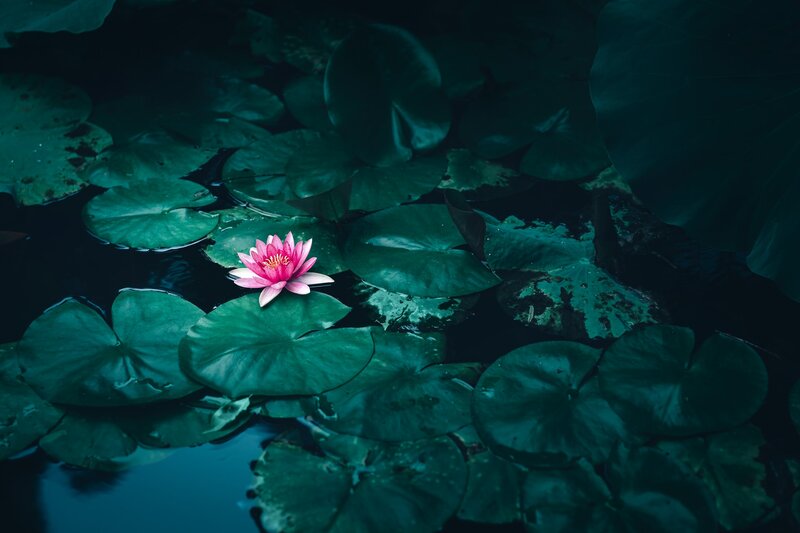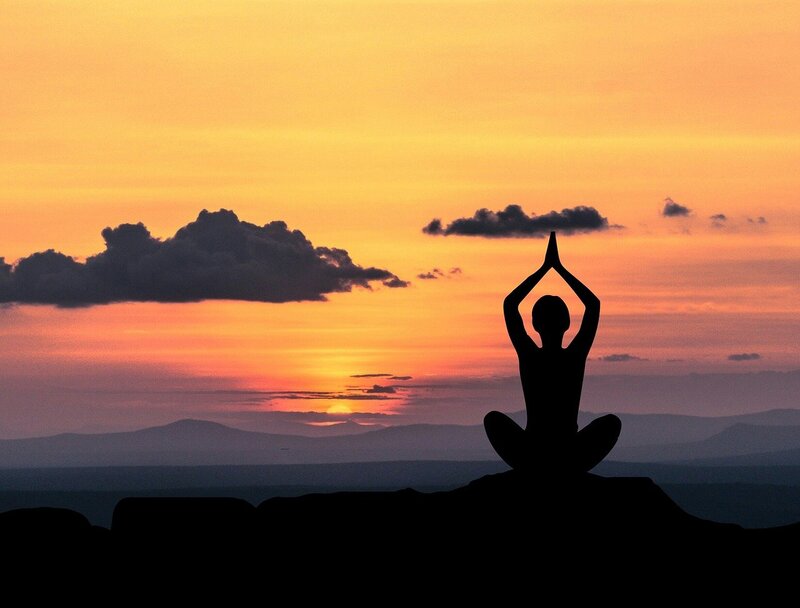Something is shifting, morphing, and evolving in your life. These alchemical changes might be subtle or shocking, sudden or progressive … but whatever the case, something is transforming below the surface. You are like the caterpillar dissolving in its cocoon.
Perhaps life is heading in a surprising direction. New doors may be opening to you, out of the blue. Synchronicities may increase. And what haunted you before is beginning to fade away.
You just aren’t the same person you used to be – and this can feel disorienting yet titillating!

Spiritual Wanderer Course:
Being a lone wolf and a spiritual wanderer is a sacred calling in life – a unique and alchemical path of awakening. You don’t need to feel lost, alone, or stuck on your journey any more. It’s time to meet your soul’s deep needs for clarity, self-acceptance, and empowerment. Let us show you how …
If you can relate to these feelings and intuitions, you might be going through a spiritual transformation.
Table of contents
What is Spiritual Transformation?

Spiritual transformation is what happens when we evolve on the level of the Soul. Like a lotus flower (which is symbolic of inner alchemy), we emerge from the muddy waters of the ego into more sky-like expansion. Spiritual transformation can happen slowly throughout time or in an unexpected, fast, or intense way.
Examples of Spiritual Transformation
To help illustrate spiritual transformation in a more nuanced way, here are a few common experiences of spiritual transformation that people have:
- Letting go of an old toxic pattern or behavior
- No longer feeling limited by a certain trauma
- Becoming more authentic and soul-centered
- Desiring to open up rather than shut down (and hide)
Of course, there are endless possibilities when it comes to spiritual transformation. Can you relate to any of the above examples? (If you have your own unique story to share, feel free to write it in the comments below.)
Spiritual Transformation vs. Spiritual Awakening (What’s the Difference?)

While spiritual awakening and spiritual transformation sound similar and are certainly connected, these two experiences are different. Let me explain why, just to clear up any confusion:
Spiritual awakening is an umbrella term that refers to the spiritual path as a whole. Spiritual transformation, on the other hand, is what happens within the spiritual journey.
Another way of distinguishing these two terms is by seeing spiritual awakening as a force of change that happens at the very beginning of the spiritual journey. And spiritual transformation is what happens near the end of the spiritual journey.
Keep in mind, though, that the spiritual journey is cyclical – so we may undergo a transformation and then begin a new era of awakening which will eventually lead to another transformation. The cycle is an ever-expanding mandala.
9 Signs You’re Experiencing a Spiritual Transformation

Our whole spiritual transformation brings us to the point where we realize that in our being, we are enough.
– Ram Dass
In essence, spiritual transformation is about returning closer and closer to the Centre of our being. It is a culmination point where all of our effort, all of our inner work and soul work, and all of our spiritual journeying begins to ‘pay off.’
However, the rewards we receive are not always what we expect – they are what we need rather than what we want. (Of course, it’s entirely possible to get what we both want and need.)
As a cyclical process, spiritual transformation is bound to happen to all of us walking the spiritual path not just once, but many times over – each time helping us to embody deeper layers of our True Nature.
Here are some key signs of spiritual transformation. How many can you identify in your own life?
1. Old ways of being disintegrate
You begin noticing thought patterns, habits, beliefs, and other limiting ways of being crumble – they don’t have the same hold on you as they once did. This dissolution or death and rebirth can cause you to feel many different feelings. Some people feel relief and gratitude, while others feel nervous and on-edge. Whatever the case, just know that it’s part of the natural flux of spiritual transformation.
Read: 7 Stages of Spiritual Alchemy »
2. New doorways open
You might be presented with new and unexpected opportunities for growth. In particular, synchronicities (or meaningful coincidences) will increase, and you’ll feel like you’re living ‘in the flow.’ Whatever you do seems to yield important results and there’s no longer what feels like an ‘invisible barrier’ preventing you from progressing.
3. Letting go and surrendering
You feel more comfortable letting Life take over the driving seat for a while, trusting in its wisdom. Letting go, letting be, and surrendering to Spirit becomes more second-nature to you. In the past, you would have struggled and resisted a lot, but now, you feel more at peace with ‘handing over the reins.’
Read: What is Inner Peace? (12 Paths to Liberation From Suffering) »
Would you like to save this?
Your information will never be shared.
4. Self-identity loosens
As you undergo the process of spiritual transformation, the attachment to your ego becomes more transparent. You cease being stuck in limited and rigid ways of being. There’s a freshness and lightness within your mind and heart that makes it easier to be fluid and adaptable. Because your ego lessens, you react less to other people and events that would usually rile you up.
5. Some people in your life leave
This doesn’t always happen, but it’s common to witness people moving on and leaving your life during spiritual transformation. Some say this is because you’re no longer “vibrationally matched” to them – or in more down-to-earth terms, you’ve each learned your lessons from the other and it’s time to get gone. You might feel a sense of relief or alternatively a sense of grief for the departure of those once close to you. Whatever the case, let yourself feel these emotions and know that it’s a necessary part of the cycle of life.
6. Profound insights into the nature of reality
It’s common to receive an influx of deep understanding about your life and the universe during spiritual transformation. These epiphanies are often referred to as ‘cosmic downloads’ – it’s as if your head opens and you’re absorbing all there is to know about the Great Mystery. What was once hidden or obscured now becomes clear, and the puzzle pieces of your life begin to fit together.
Read: The 9 Stages of Spiritual Self-Realization »
7. Energetic purging and detoxification
Perhaps one of the less enjoyable aspects of spiritual transformation is what I call energetic purging and detoxification. This purification is usually manifested in our bodies and can sometimes become quite disruptive. Another name for this experience is undergoing a kundalini awakening where the primal life force energy rises within us, and with it, clears out old ‘energetic blockages.’
8. More inner security and trust in Life
Most of us live our lives in a state of near-constant anxiety. Even if we’re not consciously aware of this fear, it’s always lurking at a deeper subconscious level. During spiritual transformation, some (and in very rare cases, all) of this looming anxiety dissolves. What we’re left with is more trust in the unfathomable wisdom of Life or the Divine. We understand that everything is working for us, not against us. This enhanced trust leads to feelings of greater inner security as we come to see that nothing can truly touch our Essence.
9. Deepening love and compassion
Finally, we come to one of the most (if not the most) beautiful aspects of spiritual transformation: love.
Our connection with our heart increases and sometimes expands to feelings of compassion for all beings. The hatred and resentment we once felt towards certain people bursts and is replaced with understanding, love, and oftentimes grief for their pain. We experience what is known as Christ Consciousness (or Oneness) where we embrace and simultaneously mourn all beings.
Of course, it’s common to experience varying degrees of this heartfulness ranging from more a heart-centered understanding to complete unconditional cosmic love. What’s most important is not how much we experience, but how deeply it impacts us and transforms our old patterns.
Read: What is Spiritual Oneness? (+ 5 Ways to Experience It) »
***
In the end, spiritual transformation is not really something we can control: it is a gift from Life. It’s an organic result of turning inwards, dissolving the shadows that obscure our Inner Light, and seeking freedom.
Furthermore, spiritual transformation tends to come and go in waves. For example, we may experience a long or short period of transformation, but that experience will eventually fade away and be replaced with something new. Such is the nature of existence. :)
What has your experience of spiritual transformation been like? I’d love to hear below in the comments! What have you learned through it?
If you need more help, we offer 3 powerful ways to guide you on your inner journey:
1. The Spiritual Wanderer Course: Feeling lost or uncertain about your path and purpose in life? Gain clarity and focus by learning about the five archetypes of awakening within you. Discover your deeper path and purpose using our in-depth psychospiritual map. Includes 3+ hours of audio-visual content, workbooks, meditations, and a premium test.
2. Shadow & Light Membership: Seeking ongoing support for your spiritual journey? Receive weekly intuitive guidance and learn to embrace your whole self, including your shadow side. Deepen your self-love and receive personal support from us.
3. Spiritual Awakening Bundle: Ready to soul search and dive deep? Access our complete "essentials" collection of beloved journals and eBooks. Includes five enlightening eBooks and seven guided journals, plus two special bonuses to further illuminate your path.









meditation can be a key point for self discovery and inner energy.
Have always been a rather shy and quiet person. Some inner healing and shadowwork made me realize it has been a persona I have taken upon me to protect me rather than a real me.
This also made me realize that I want to move to a new town to start fresh. But I am also really scared of this new outgoing personality and if I am even identifying with this. Probably because I haven’t really ‘been’ that person full on yet..?
And all of these reflections and feelings started after I started meditating and sitting quietly and also did the journaling work – and realised that this spiritual interest is something that I have forgotten that I am really interested in. Like a personality I have put away.
In the midst of me starting all the healing/journaling work I started seeing a bunch of angelnumbers throughout the day. 5-7 a day I think.
Those are some powerful insights Fie. Keep up the great work, it seems to be unfolding a lot for you. 😊
My transformation began in May of 22 when my husband of 30 years left me without notice. I know it to be more than just that now but my experience of this process has been heart breaking, lonely and challenging. When he left, everyone in my life, with the exception of a few…and I mean few, left as well. My family, his family…mutual friends and my friends, gone. These are the people who I gave…gave…and continued to give to with no reciprocation. Giving was my way of obtaining love that was never got. Within a month of him leaving I had a voice tell me repeatedly that I was supposed to be experiencing this and that everything would be okay which at the time gave me a sense of calm until the real work began which started with moving through my childhood trauma and abandonment. Then I stumbled into Tarot, started watching it, buying my own cards and doing my own readings that kind of told me what was going on and what was next including all of the challenges. Then the book Power of Now followed by Biology of Belief and several tarot books and trainings. I’ve gotten to know my Spirit guides as well and have regular conversations with them some of them good some of them angry. I also now know this as something my soul chose before I was even born. Additionally, the frequencies in my ears that started around February 24 have changed over the last 6 months and is now a very high pitched frequency that sometimes I no longer hear unless I think about it….and the numbers have been syncing for months as well….all of them, 1010, 1111, 1212, 444 etc. This next full moon is going to be a doozy….I can already feel it. This moon will bring up addressing negative patterns, thought processes and basically change who I am. It’s a lot…it’s scary (I know that it shouldn’t be) but considering a detached from my emotions back in mid may to give myself a break I know that this coming weekend will be spent likely on more grieving. I’m so sick of crying but am slowly but surely learning to let go and go with the flow.
You got it Girl, that is a real and true transformation. You will have more of these, but they will be smoother and less emotionally intense. You are moving quickly along the path, never doubt what is happening inside of you. So happy for you! 👍😆
The moment it occurred and the moment I had realized there was something completely different with my thoughts and behaviors are unclear but I estimate that roughly a month had separated the two. One day, I was laying in bed thinking and dawned on me, I had new opinions, new beliefs, new concerns and so on… I wasn’t sure how or why but it was obvious and it weighed on my mind until I realized it was recent enough to be able to recall if any specific thing (worldly) had occurred. Now, due to the fact I was not involved with literally anything, relative to daily routines and obligations, it was a time of very limited activities and interactions and it was easy to eliminate the idea that a recognizable occurrence triggered a change. The intrigue, curiosity and exploration into this phenomenon dissipated quickly, likely due to contending issues that had already been dominating the realms of my thoughts. It has been roughly 2 years and until stumbling onto this website today, I didn’t know it had a name or any information other than the facts of the phenomenon itself, so to all whom were involved with creating and maintaining this website, Thank You. 💌
Sincerely, Steven D.
ps – Around the same time, I had what I can only describe as an epiphany… An idea or realization of extraordinary significance, to the point of disbelief. However, in trying to resolve, well actually in trying to rid my mind of this I’ve been systematically scrutinizing the idea, knowing that I wouldn’t stay fixated on it once I determined that it was not possible. Well, I’ve exhausted the list of possibilities and challenge other’s to explain why it’s not plausible, there’s not a single one that I can find and others alike are unable to find any. Which leads me to believe that if the proper steps were taken, the idea could materialize, actually manifest and become a much needed reality, especially as we find ourselves traversing a cleverly devised gauntlet. With that said, I don’t know what to do. I’ve made a few attempts to get assistance and feedback but have been unsuccessful so far. If anyone reading this is interested in helping or learning more then feel free to email me at sagaciousspectacle@gmail.com and put in the description box of the email “realization of extraordinary significance”.
Yes! Nailed it again! “Grief for their pain” and “mourning all beings” really resonated. I feel this overwhelming sadness sometimes that we can’t all awaken and love.
You’re not alone, Lola. I hope you take comfort in knowing that 💗
”Where there is no struggle there is no strength.”Try to find yourself where you are and try out yoga and meditation for more peace and self discovery.
Not all, but you and I can
I think I’ve been undergoing a pretty long transformation. I suppose it might have begun shortly after one of my many awakenings around 4 years ago. I have had multiple awakenings but nothing really came to be of them because I went back to sleep each and every time. Only now when I’m more desperate than ever and basically fighting for my life have I finally been able to just *consider the possibility* that I can change, that maybe, perhaps, I am enough, and just can’t see it yet.
Lately I received a key, a missed diagnosis that explains so, so much: why the treatments for depression never worked for very long or at all, and why I struggle with things that depression cannot explain. I always thought I was broken, flawed on a level so inherent it lessens my inherent worth as a human and that of my very soul.
I’m now on a long waiting list for a treatment program for this diagnosis. I haven’t done anything major yet, but I am trying to remain as open to the idea of change and transformation. And maybe soon my ego can let go of all the things that are keeping me in this state of suffering.
No matter what life sends your way, you need to know that you are enough. You are worthy of living your best life. The answers truly do reside inside of you, sometimes it is so hard to see this because of the darkness of the shadows. It takes tremendous courage to take a stand and try and better yourself. Never give up on becoming better,you are so worth it.
Thank you, Alex. Your words of encouragement and validation are worth so much to me!
Your words are so beautiful and touching, Alex, and I second them. If you ever get the chance, Celtice, I recommend checking out the Liberation Unleashed website. It is of great help to those who are sincere about seeing through the ego. Much love <3
Try out behavioral activation, set attainable goals and reward your efforts,do something you enjoy consider a walk around the block and spend time in nature.
Thank you for your reply. Those kinds of things are what I’ve been doing for a long time, but the missing diagnosis I mentioned was borderline personality disorder, and I also learned I have OCD, and both of these things make treatment much more complicated. My current therapy is great, though, and behavioral activation has certainly helped!! I also like being in nature though that has gotten very hard. I need to start with just sitting on the front porch lol.
Hi guys, just touching base. I was guided to Lonerwolf by my Wolf Power Animal in January 2021 when my husband was at end of life in a hospice. Your website explained what I was experiencing – a spiritual awakening – and now, June 2023, I have transformed….into a shaman! Ha! Ha! WOW! What a journey! But then, that’s why me and my husband came to Earth…to help humanity through The Big Shift…and my husband died to wake me up! We knew I’d need a bloody big kick up the arse to knock me out of the illusion, and boy, did it! But I wouldn’t change a thing! We are now more connected than ever, and we’re getting on with the job! So, once again, Luna and Sol, thank you for all that you do, and for this amazing website, which I often recommend to people. THANK YOU! 🙏🤗
What a ride, Lisa. I’m so honored that our work has helped you to reframe your painful life experience and discover a sense of power, transformation, and purpose through it. Thank you for your service to humanity. Much love and gratitude 💜
Thank you so much for being with me on this journey. I’m so grateful for your guidance over the years. You have raised me up all this time. My heart is with you both and this entire community. Safe travels to everyone.
Thank you Anonymous, what a lovely message you’ve shared here. Safe travels ❤️🔥
Very well said. +1
This has been a beautiful journey of ups and downs, sufferings and bliss. I have been on my spritual journey for last 3-4 years. Slowly, I can watch the ego for what it is. Surrendering is a beautiful process. I can relate to people at deeper level and know that everything is happening as it should happen. Ofcouse, the progress is not linear but in spirals but just loving this journey. Thank u so much for all the love and support
Beautiful. Thank you for sharing this Nisha 😊 💛
I am currently going through spiritual transformation. I didn’t understand what’s going beneath the surface. Thanks for the post which gives me a lot of clarity.
It’s a pleasure to be of service, Sunaina ❤